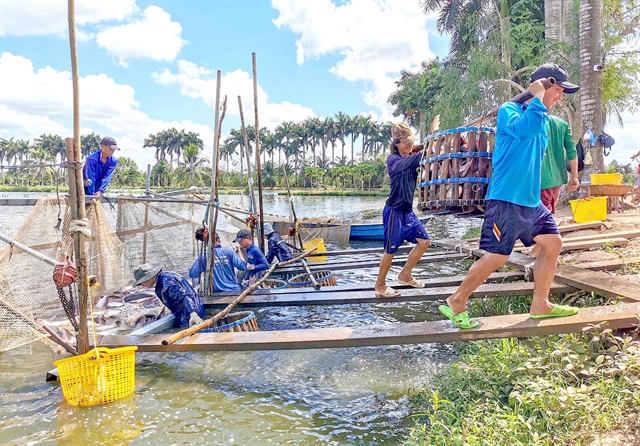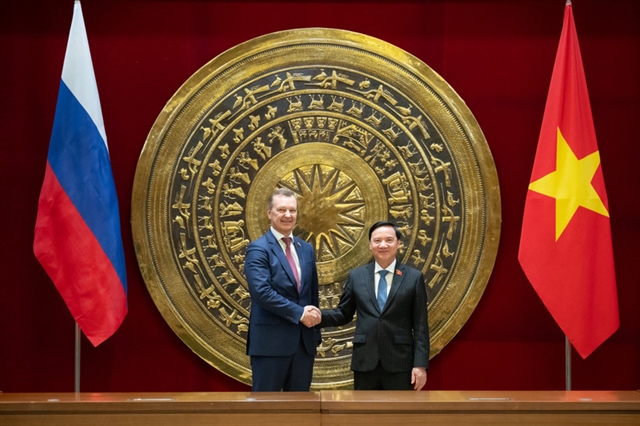 Opinion
Opinion

 |
| Dr Nguyễn Hiếu Trung is Cần Thơ University's vice rector and researcher at its Research Institute for Climate Change. — Photo baotainguyenmoitruong.vn |
Cần Thơ University vice rector Dr Nguyễn Hiếu Trung, spoke to Việt Nam News about the factors that affect the agricultural chain in the Mekong Delta, and the direction to take in order mitigate these issues.
What are the factors that affect the agricultural value chain in the Mekong Delta?
Farmers are always under the pressure to change, because they would not survive if they keep following the old ways. When we place ourselves in the shoes of farmers and conduct surveys with them, we learn that there are four factors that affect their situation, which we called the four P’s.
The first “P” is the prices for production input and output, if those change for the worse, the farmers have to go along – for example, if the durian or jackfruit exported to China dropped in price, they would cut down these trees to grow other types. The second “P” is the producers, or farmers themselves: whether they know about the cultivation techniques or want to change themselves upon this switch. Many people would choose to endure hardship, but others want to change. The third “P” is the Government’s policies – farmers will be affected when the policy changes a certain area from growing saltwater crops to freshwater ones [due to climate impact], or if they retain certain rice crop areas for food security. The final “P” is about the place – whether the field is located in a saltwater or freshwater area. When those regions are impacted by climate change, farmers have to change with them. We can see that the stakeholders here are the Government, the local authorities, scientists, and businesses and suppliers in the value chain.
What we need to do is to have these stakeholders sit down and make decisions together. Scientists can provide information on soil, the changes that could occur, the analysis and statistics on prices and risks of diseases. For businesses, it’s about how they can make their products environment-friendly and of good quality so that the farmers face fewer risks.
Farmers can ensure that their produce is clean, but the price of that output is determined by merchants and processors in the later stages. Therefore, all of them need to contribute their efforts in this matter to build a healthy, sustainable chain, and farmers can profit from the price increase of their produce. Any damaged link in this value chain can make the whole system collapse.
Is a coordination framework available for this cooperation?
No, not yet. We are working towards that with small-scale actions. For example, we are planning a project that combines growing mangroves and shrimp farming. This model generates high-quality shrimp, but its price on the market is only as much as the ones from ordinary models. The goal now is to work with relevant stakeholders so that farmers continue this model for shrimp farming while also growing and protecting the mangroves, otherwise, they would switch to another product.
Regarding COP26, it does not just concern the livelihoods of people but also requires the reduction of greenhouse gases (GHG), and the current agricultural and farming practice generates a lot of GHG. We need to work on a new technique that could reduce GHG, but that would increase the pressure on the farmers as well. That is why the Government called for countries to assist Việt Nam in implementing new technology or providing financial support, otherwise we can only reduce GHG through energy use.
 |
| Workers harvest pangasius fish in Bình Thủy District of Cần Thơ City. — VNA/VNS Photo Thanh Liêm |
As the key factors have been identified, has a solution or a direction been put forward to address this situation?
It is mostly about direction. For example, when the local authorities or the farmers switch their farming models, we would go out to the field to survey, study and analyse the situation, that was how we came up with the 4 P’s. We generate new directions on that basis.
For example, the Cửu Long (Mekong) Delta has key value chains of shrimp or pangasius for export, and so the whole process needs to generate clean and safe products that would enter the market, and the market would be stable and growing.
Our approach is to base on these chains and the agro-business model to generate higher profit, instead of having people “rescuing” agricultural produce as we have seen recently. The products must be certified, and then processed by market agents – the merchants, processors and logistics operators in a way that increases the value and responds to the market’s needs. In the market, as the final stage of that chain, it is about how to gain trust from customers and ensure that the products are good, with quality certification, then the price would be elevated and stable for the long term.
Therefore, if the Cửu Long Delta strives for sustainable adaptation, it is not only about what farmers grow in accordance to natural conditions, but also ensuring that the process of production and distribution must be sustainable and resilient to unexpected shocks, such as disease or price fluctuation, that is our direction.
What are the major obstacles in implementing this direction?
The biggest obstacle is that the stakeholders have not sat down together for discussions. What we are looking for is the role of the authorities as the policy-maker to show the benefits of these discussions, and that working together can bring greater advantages and share the risks. For example, when businesses make gains from this value chain, they should also share the risks with farmers, such as insurance in case of natural disasters or price fluctuations. The role of the authorities is to issue favourable policies, such as tax subsidies for businesses, depending on each model and each value chain.
The whole region is big, but we can divide it into smaller parts. The northern region, for example, is at risk of drought because of its high grounds and the upstream hydroelectric dam. It would have a different ecosystem that requires a different model, and based on its unique characteristics we generate infrastructure solutions. The same with the coastal salt marshes and low grounds. — VNS




